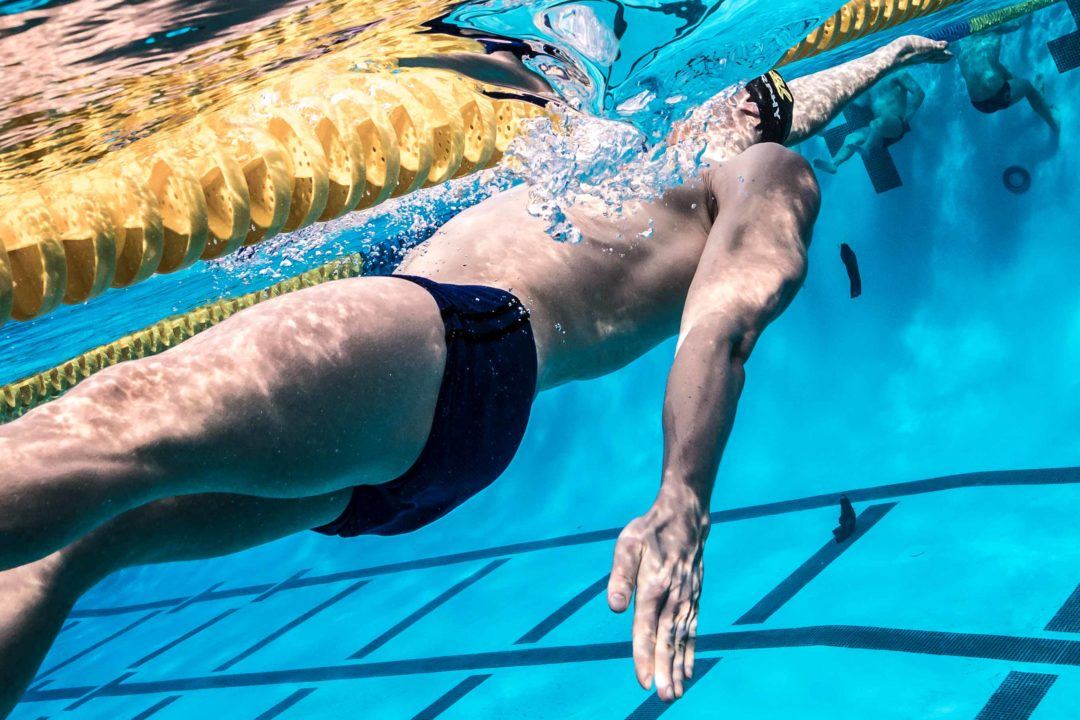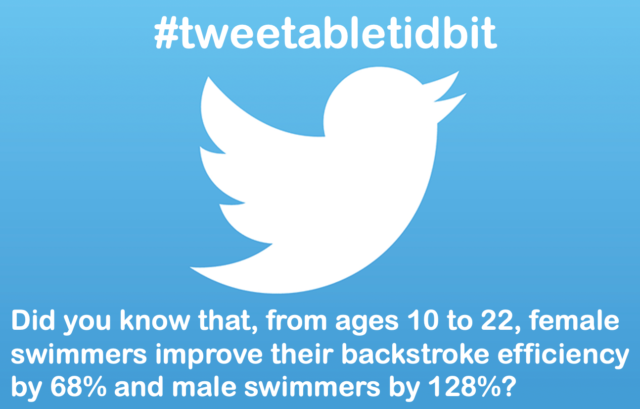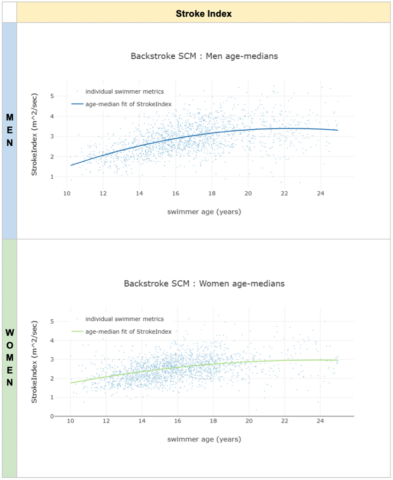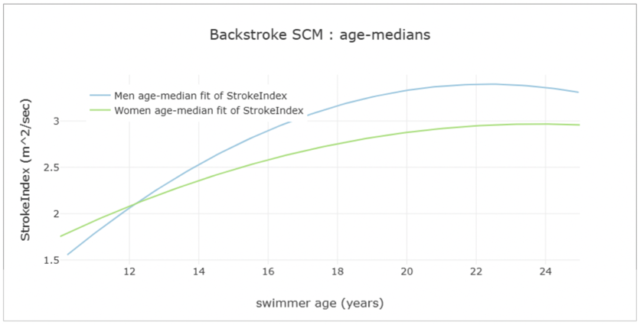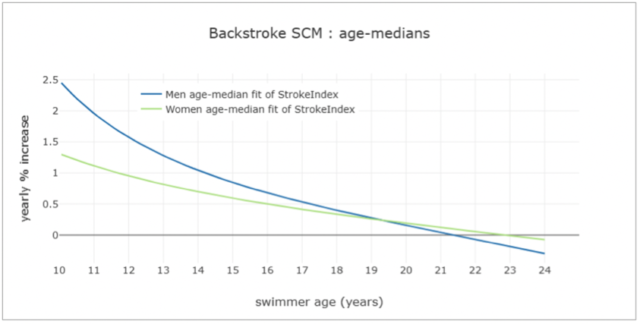Greetings swimmers, coaches, and swimming enthusiasts! We are back with another installment of the TritonWear Analysis series.
In the previous TritonWear analysis, we learned that age and physical growth affect young swimmers’ freestyle stroke rate and distance per stroke (DPS). As young swimmers grow older and taller, their freestyle stroke rate tends to drop while their DPS continues to improve. This trend is likely because swimmers are gaining more height—as well as further developing their stroke technique and learning to hold water more efficiently.
Now, the TritonWear team is “flipping over” from freestyle to backstroke to ask: as young swimmers grow in age, height, and ability, how do these changes affect their backstroke efficiency (speed + DPS)?
As a refresher, here is how TritonWear measures stroke rate and distance per stroke (DPS):
| Stroke Length or Distance per Stroke (DPS) |
| measured in “meters per stroke” and calculated as “the distance swum overwater (from the breakout to the end of the pool) divided by the number of strokes.” |
Today, we are also going to consider one more important stroke measurement: Stroke Index. TritonWear has developed a Stroke Index that helps swimmers track their stroke efficiency. Stroke Index is calculated by multiplying (1) speed, (2) DPS, and (3) a “cycle multiplier” (i.e. the number of strokes in a stroke cycle, which is 1 for fly/breast and 2 for free/back).
A higher Stroke Index is generally viewed as a more efficient stroke. If two swimmers are going the same speed over the same distance, the one who takes fewer strokes is likely more efficient, although there are certainly different strategies involved (for a more nuanced discussion on this topic, check out TritonWear’s helpful blog entry on Stroke Index).
Backstroke Analysis
The TritonWear team examined data from 880 male and 968 female swimmers (ages 10–25) who swam backstroke in 25m pools (one might say a “back pack”) using Triton Units to collect swimmers’ stroke information.
The TritonWear team found that, as with freestyle, a swimmer’s age did affect their backstroke DPS—but the findings were particularly dramatic when the TritonWear team looked at Stroke Index (which includes DPS + Speed) rather than DPS on its own.
Both female swimmers and male swimmers steadily improved their backstroke Stroke Index (stroke efficiency) as they grew older. Female swimmers tended to increase their Stroke Index until around 21–22 years old, and male swimmers generally increased their Stroke Index until about age 22.
| Female Swimmers: | Male Swimmers: |
| Increased their stroke index (SI) until around age 21 or 22, then their SI tends to remain the same | Increased their stroke index (SI) until around age 22—and at a faster rate than female swimmers (particularly in younger years) |
| Improved their median SI by a sizeable 68% from age 10 (1.75 m^2/sec) to age 22 (2.95 m^2/sec) | Improved their median SI by a whopping 128% from age 10 (1.49 m^2/sec) to age 22 (3.40 m^2/sec) |
The same graph, but with fitted trend lines for both women and men:
Although girls begin with a higher backstroke SI than boys at age 10, the boys pass the girls around age 13, which is earlier than the boys passed the girls in terms of freestyle DPS in the previous analysis (in the graph above, you can see that the blue line crosses over the green line around 13 years).
Because Stroke Index includes both DPS and speed, it is likely that the results above relate to some combination of increased height—and the impact of musculature gains on speed—for boys around age 13.
Lastly, it is interesting to see how much swimmers increase their Stroke Index each year. The graph below shows the yearly % increase in backstroke SI for both male and female swimmers:
From this graph, we can observe the following trends in backstroke SI improvements across different ages:
Final Thoughts
Physical development plays a major role in determining backstroke SI, which uses speed and distance per stroke to determine stroke efficiency. Boys age 10–13 typically see the greatest yearly increases in their backstroke SI. For both female and male swimmers, athletes will likely experience SI improvements in their backstroke from roughly ages 10–22, at which point they will no longer see significant increases.
For more information on improving Stroke Index, check out TritonWear’s helpful blog post on this topic.
Learn more about how you can improve different areas of your swim such as stroke technique, turns, and more, in this comprehensive guide on How to Swim Faster.
VISIT THE TRITONWEAR HQ
FOLLOW US ON INSTAGRAM
LIKE US ON FACEBOOK
FOLLOW US ON TWITTER
Tritonwear is a SwimSwam partner.
